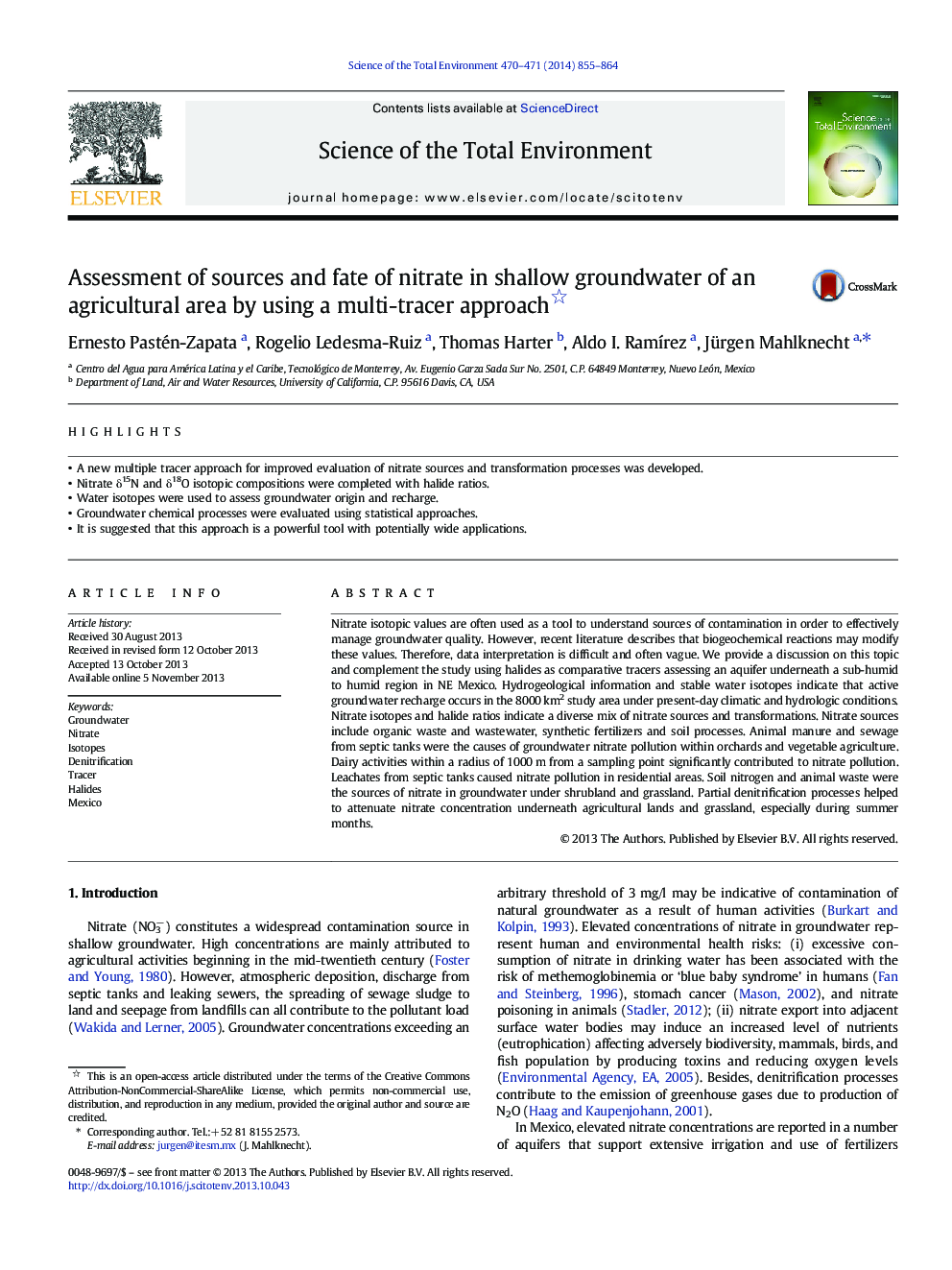| Article ID | Journal | Published Year | Pages | File Type |
|---|---|---|---|---|
| 6331510 | Science of The Total Environment | 2014 | 10 Pages |
Abstract
Nitrate isotopic values are often used as a tool to understand sources of contamination in order to effectively manage groundwater quality. However, recent literature describes that biogeochemical reactions may modify these values. Therefore, data interpretation is difficult and often vague. We provide a discussion on this topic and complement the study using halides as comparative tracers assessing an aquifer underneath a sub-humid to humid region in NE Mexico. Hydrogeological information and stable water isotopes indicate that active groundwater recharge occurs in the 8000Â km2 study area under present-day climatic and hydrologic conditions. Nitrate isotopes and halide ratios indicate a diverse mix of nitrate sources and transformations. Nitrate sources include organic waste and wastewater, synthetic fertilizers and soil processes. Animal manure and sewage from septic tanks were the causes of groundwater nitrate pollution within orchards and vegetable agriculture. Dairy activities within a radius of 1000Â m from a sampling point significantly contributed to nitrate pollution. Leachates from septic tanks caused nitrate pollution in residential areas. Soil nitrogen and animal waste were the sources of nitrate in groundwater under shrubland and grassland. Partial denitrification processes helped to attenuate nitrate concentration underneath agricultural lands and grassland, especially during summer months.
Related Topics
Life Sciences
Environmental Science
Environmental Chemistry
Authors
Ernesto Pastén-Zapata, Rogelio Ledesma-Ruiz, Thomas Harter, Aldo I. RamÃrez, Jürgen Mahlknecht,
